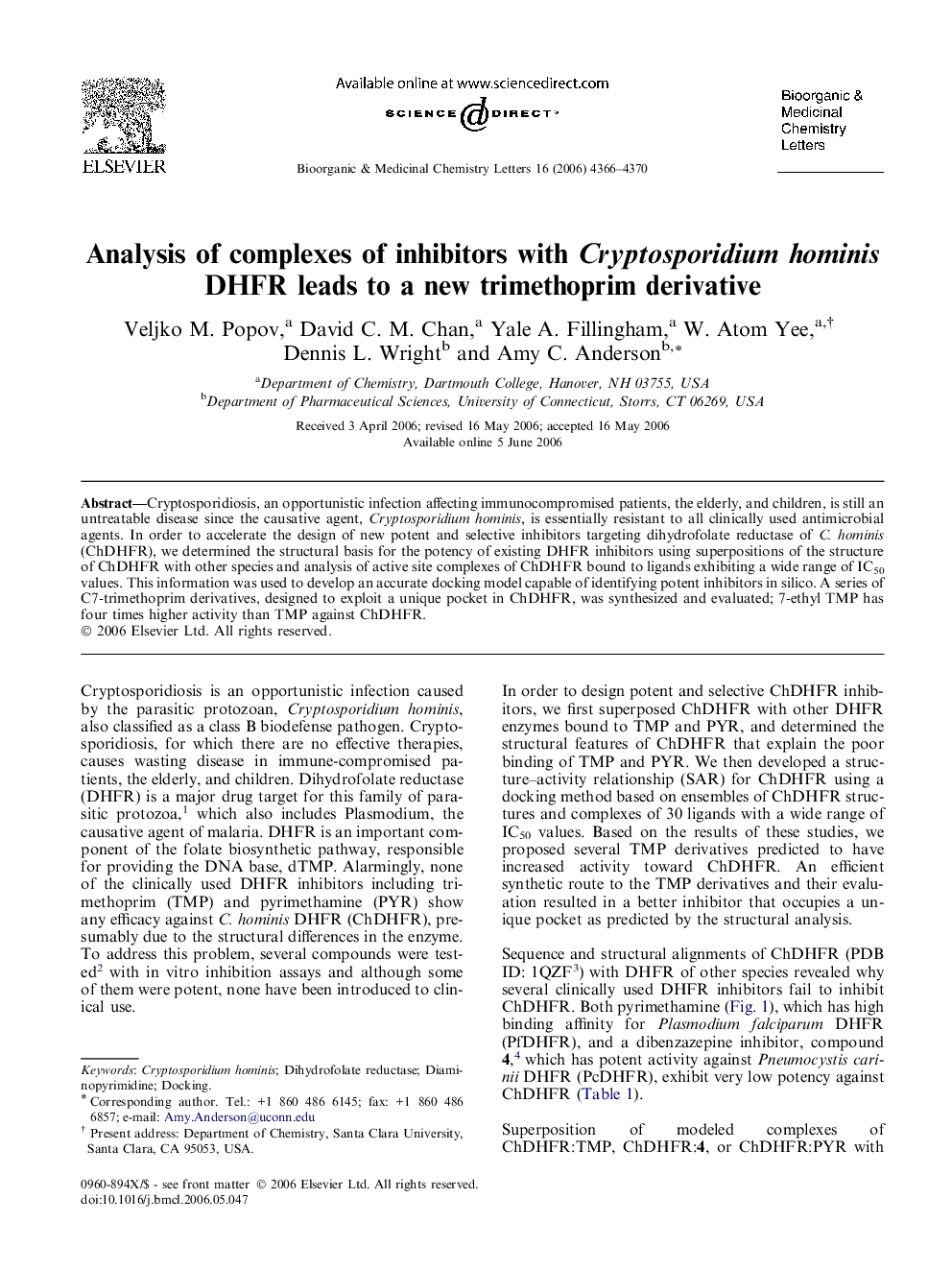| Article ID | Journal | Published Year | Pages | File Type |
|---|---|---|---|---|
| 1378685 | Bioorganic & Medicinal Chemistry Letters | 2006 | 5 Pages |
Cryptosporidiosis, an opportunistic infection affecting immunocompromised patients, the elderly, and children, is still an untreatable disease since the causative agent, Cryptosporidium hominis, is essentially resistant to all clinically used antimicrobial agents. In order to accelerate the design of new potent and selective inhibitors targeting dihydrofolate reductase of C. hominis (ChDHFR), we determined the structural basis for the potency of existing DHFR inhibitors using superpositions of the structure of ChDHFR with other species and analysis of active site complexes of ChDHFR bound to ligands exhibiting a wide range of IC50 values. This information was used to develop an accurate docking model capable of identifying potent inhibitors in silico. A series of C7-trimethoprim derivatives, designed to exploit a unique pocket in ChDHFR, was synthesized and evaluated; 7-ethyl TMP has four times higher activity than TMP against ChDHFR.
Graphical abstractA trimethoprim derivative with an ethyl substitution at the C7 position forms van der Waals contacts with Cys 113 and shows increased potency.Figure optionsDownload full-size imageDownload as PowerPoint slide
